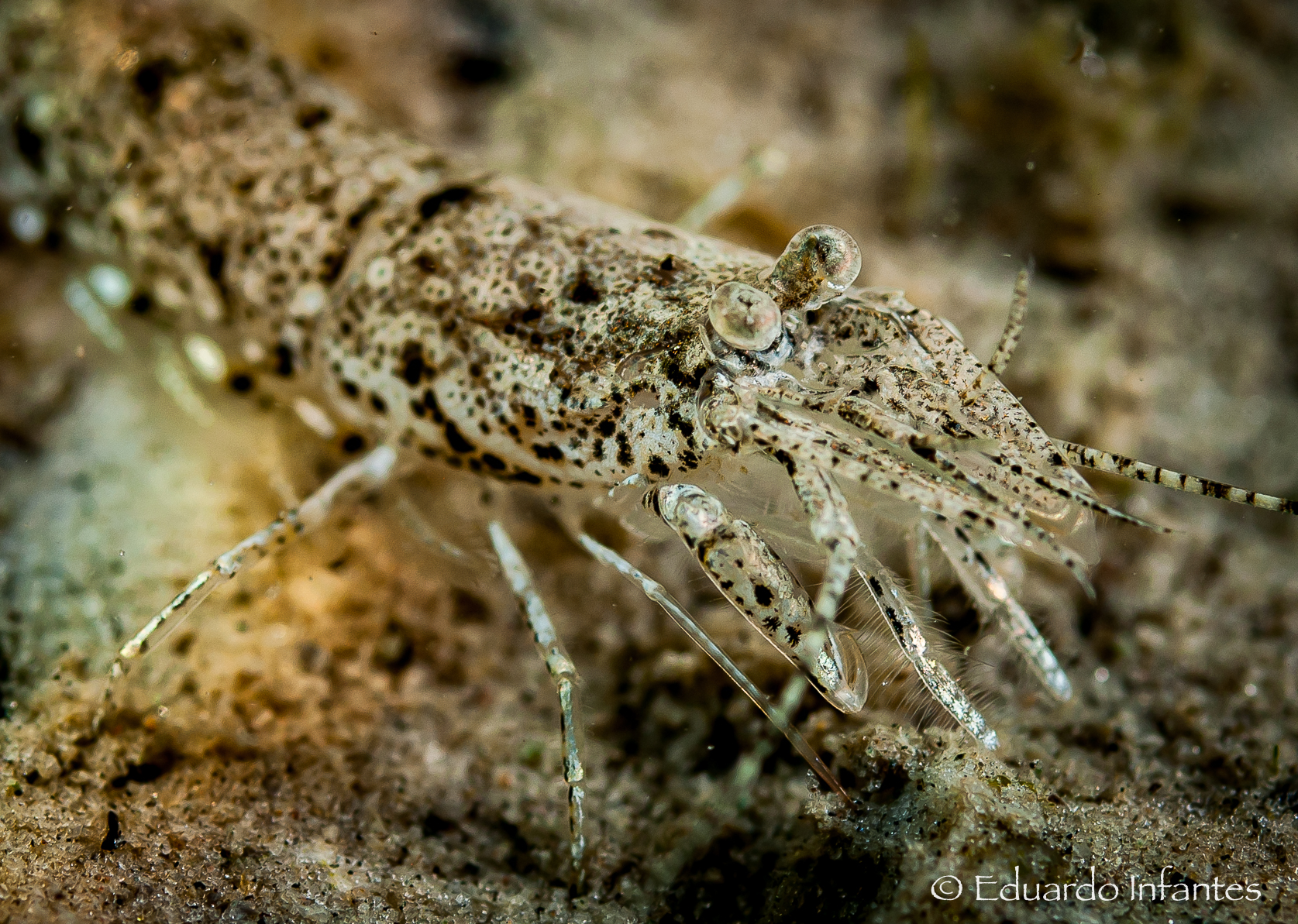Abstract
Even though hydrodynamic conditions play an important role in shallow costal ecosystems such as enhancing primary production by the remobilization of nutrients, they could represent a potential threat to motile benthic animals because they can dislodge them and restrict their movements, thereby impacting their distribution within the ecosystem.
Seagrass canopies are critical habitats that shelter many organisms against predators and adverse hydrodynamic conditions, however, they have been declining over time, resulting in seagrass fragmentation and low canopy densities.
The shrimp Palaemon adspersus is an epifaunal species that thrives in Zostera marina seagrass, and therefore can offer insight into the impact canopy fragmentation is having on its behavioral patterns. In a laboratory flume with unidirectional flow, P. adspersus individuals were exposed to flow velocities in sand bottoms covered with Z. marina canopies, and their distribution studied as a function of both the canopy density and the current velocity.
Flow velocities above 3 cm s-1 started to dislodge P. adspersus individuals, thereby reducing their tolerance to the flow. However, under flow velocities ranging from 3 cm s-1 to 21 cm s-1, they preferred to shelter within the seagrass canopies with intermediate densities higher than 150 shoots m-2, compared to bare sand. The patch density at which individuals found patch sheltering decreased linearly as the current velocity increased, indicating that individuals were unable to withstand the velocity of the flow.
For current velocities above 21 cm s-1, P. adspersus were unable to tolerate the flow velocity, and so were dislodged from the canopy. This study highlights the importance of protecting eelgrass, as the ever-decreasing meadows are making P. adspersus even more vulnerable to the high flow rates.









